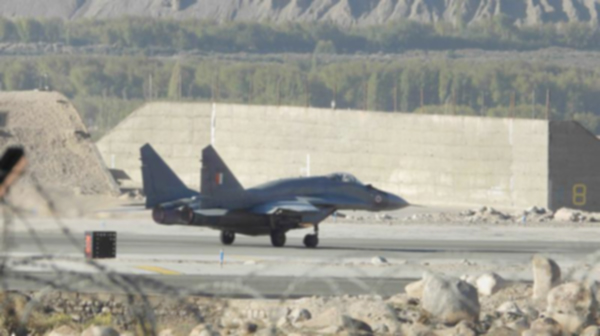New Delhi and Beijing have seen their relationship deteriorate further over recent tensions
By Peter Suciu
For several months a potential conflict has been brewing along the Line of Actual Control (LAC), the poorly demarcated border that separates Chinese and Indian-controlled territory along the Himalayas. It began in June when soldiers from the Chinese People’s Liberation Army (PLA) crossed the LAC and clashed with Indian forces in the Galwan Valley.
That territorial transgression began a major escalation of tensions between the two most populous countries in the world but the roots of a potential conflict go back to the October 2013 when the India-China border defense cooperation agreement failed to make certain that the actions of a patrol wouldn’t result in armed conflict.
The situation has potentially gone from bad to worse as an assessment from the Indian Army’s Brigadier Hemant Mahajan (Retired), titled “Operational Logistic Readiness of the Indian Army” was circulated to the media by the Northern Command PRO (Public Relations Officer). Mahajan said the Indian Army is fully prepared to fight a full-fledged war even in winters in eastern Ladakh and China should expect to face better trained, better prepared, fully rested and psychologically hardened Indian troops.
The retired general’s comments came after a report from Chinese state media outlet Global Times suggested India’s operational logistics was not geared up adequately and that it would not be able to fight through the winters effectively. “This can best be attributed to ignorance. Indian Army is fully prepared and more than capable of fighting a full-fledged war even in winters in eastern Ladakh,” Mahajan said in a statement as reported.
“India is a peace-loving country and wishes to have good relations with its neighbours. India always prefers to resolve issues through dialogue. While talks are in progress to resolve the border issues with China in eastern Ladakh, at the military level it is well prepared for the prolonged stand-off.”
The Indian Army’s Northern Command PRO distanced himself from the retired general’s comments, saying that Mahajan’s assessment “doesn’t represent the views of either Northern Command or Indian Army.” However, at the same time the Northern Command has made it clear it would be ready should it come to war.
Winter is coming
The conditions in Ladakh are what could be considered extreme. The altitudes range from “high” to “super-altitude,” and there can be up to forty feet of snow after November. “Coupled with this, the temperature dipping down to minus 30 to 40 degree Celsius is a usual phenomenon,” said the Public Relations Officer. “Wind chill factor makes matters even worse for the troops.
The roads also get closed due to the snow. But despite all this, the most encouraging part for India is that the Indian soldiers have a huge experience of winter warfare and are psychologically tuned to operate at short notice.” India claims to be prepared should they need to take action. “Logistic capability relates to mobility, habitat and billeting, quality services for health, special rations, repair and recovery, heating systems, high-quality weapons, ammunition, quality clothing, and so on,” the PRO added.
“While much of these capabilities existed earlier and troops could simply plug and play, a lot has also been boosted since May this year when China showed first signs of aggression.” With winter just around the corner it is likely cooler heads will prevail despite the recent saber rattling, and diplomatic talks between the two nuclear-powered nations took place in Moscow earlier this month.
Peter Suciu is a Michigan-based writer who has contributed to more than four dozen magazines, newspapers and websites. He is the author of several books on military headgear including A Gallery of Military Headdress.


